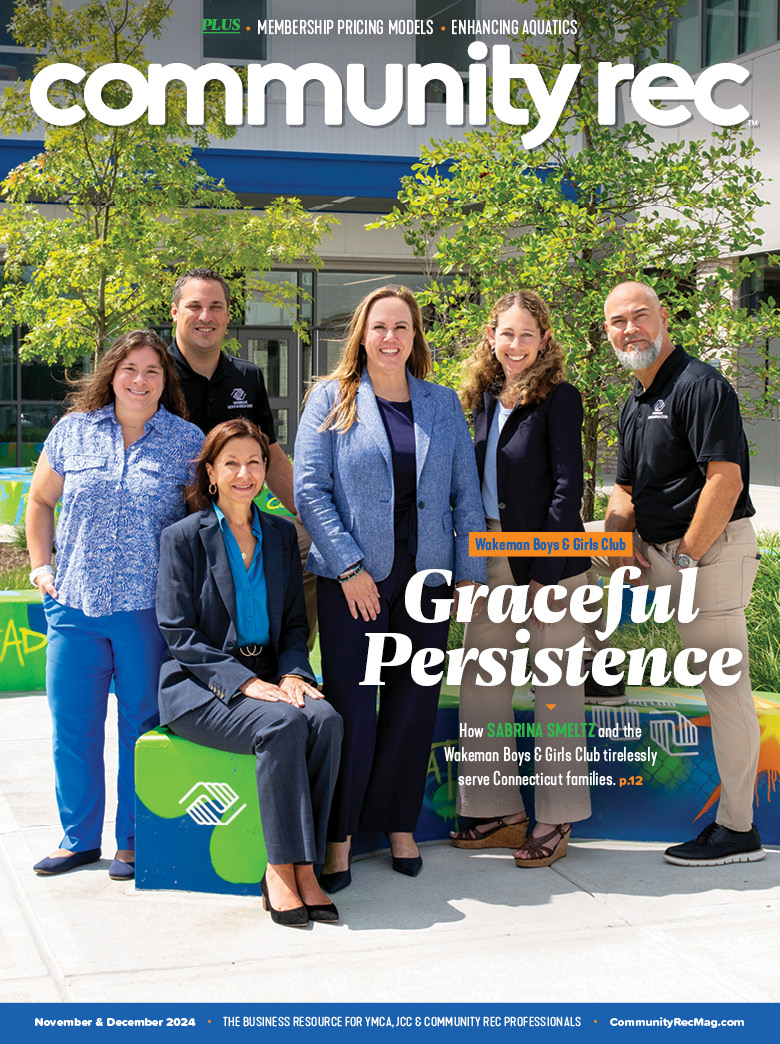A physical distancing and healthy hygiene intervention was conducted throughout Summer 2020 amid the height of the global COVID-19 pandemic. Data collection and observations were collected for eight weeks during various physical education and athletic training summer camps. Some of the camps included tennis instruction, yoga and general fitness taught in a gymnasium.
Campers’ ages ranged from five to 12 years old and each class ranged from six to 16 students per class. The following anecdotal observations were not independent or dependent variables for which data was collected. However, we found these observations important and that they demonstrated areas for manipulation and exploration for future research.
Prompts and Models from Instructor
It was observed during camp there was an increase in physical distancing when the instructor provided appropriate modeling to the students. This modeling was a demonstration of the teacher moving away from another person when they came within six feet. The instructor also provided modeling of verbal prompts for physical distancing through words and phrases to encourage physical distancing when another individual was close, such as “stop, you are too close to me.” Participants were encouraged to move away or stop when they were near their peers.
Participants were also encouraged to communicate with their peers as a verbal prompt for physical awareness if another peer was moving within six feet of their area. Teaching also modeled other replacement behaviors, such as participants who have an itchy nose or a tickle, as another way to increase healthy hygiene behaviors. The instructor modeled how to stretch the elbow of their shirt to the nose or face. When participants demonstrated using the elbow of their shirt, instructors provided descriptive praise, increasing the likelihood of the participant performing the future behavior.
Prompts and Modeling from Peers
Throughout the camp, several participants practiced physical distancing by telling their peers to stop or physically move away from others. Several campers put up their hand as a physical gesture to ensure the peer would stop and not get close in proximity. Some participants mentioned to their peers to stay six feet away so they would both remain safe.
Size of Gymnasium Space
When using the full gymnasium, participants could practice physical distancing more easily than when activities were isolated to half of the gymnasium space. Physical distancing increased when the instructor provided verbal instruction and positive praise for the target behaviors of physical distancing and healthy hygiene. The instructor also provided positive praise when the participants communicated to peers regarding keeping physical distance, although this was not a measured target behavior.
Use of Stimulus Prompts
Setting up the gymnasium with play spots — rubber circles the size of a paper plate and placed on the gymnasium floor to provide a visual prompt for participants — also increased physical distancing and prompted participants to stay in their area to practice their physical movement activities due to providing stimulus prompts.
Size of Classes
Smaller camp sizes of six to eight participants allowed more individualized attention, verbal instruction and praise. It was observed the smaller class sizes increased participants’ likelihood of practicing physical distancing. In the larger camp groups of nine to 16 participants, physical proximity decreased. The participants continued to follow the rules for physical distancing. However, the size of the class made it a more challenging task. It was more difficult for the instructor to provide prompting to students when the camp group was larger. A larger camp size decreased opportunities to provide individualized attention for students to stay physically distanced, while decreasing open areas of the gymnasium for students to participant in activities.
Instructor Antecedent Manipulation: Activities That Promoted Distancing
It was observed the instructor selection of games and class activities had an effect on increasing or decreasing distancing behaviors. A few activities that proved easier for physical distancing to occur included partner play with play spots that indicated where to stand. Placing activities around the full gymnasium also provided physical distancing amongst the partner and the group. Many activities in which tape was placed on the wall to provide a visual location during activities increased physical distancing. Yoga naturally isolated each individual to their own mat and therefore provided physical distancing throughout the entire lesson.
However, when students participated in ball sports such as pass and catch games with a ball, physical distancing decreased. Students started the pass and catch game with a ball already physical distanced, but as the game progressed, there was a decrease of physical proximity behavior due to balls rolling and bouncing around the gymnasium. The increase of movement was due to students inaccurately passing to their partner or an inability to catch a pass correctly.
Age of Participants
Healthy hygiene behaviors in camp included keeping hands away from the face. It was observed for the younger age groups of five to seven that more face touching via a finger to their nose or mouth occurred. The older age groups of eight to 12 did not touch their faces as much. We hypothesize this is because of the social rules and constructs for older group not to place their fingers in their nose.
Dress Code
It was also observed for those participants who had their hair down, or falling out of their pony tail and clip, were more likely to touch their face. In future programming it is recommend participants have a requirement for their hair to be pulled back before starting class to increase the likelihood participants will keep their hands to their side while not participating in activities.
Competing Physical Behaviors
When participants of all ages had equipment in their hands, it was an incompatible behavior for face touching. We noticed a decrease in this target behavior during these activities. It was observed when participants kept their hands busy, such as participating in a push-up, they would not touch their face. There was more face touching when participants had their hands free of equipment or were busy participating in an activity that included using their hands.
New Participants
It was observed when new participants came to camp there was a decrease of physical proximity and decreased healthy hygiene behaviors. The instructor increased verbal instructions, prompts and positive praise for the new participants who attended camp. The increase of participants and new participants continuously changed the physical distancing and healthy hygiene percentages in the camp setting.
Final Notes
Another way teachers can increase healthy hygiene behaviors is by setting up the environment with “healthy hygiene stations” as a visual prompt for students. These stations include access to tissue boxes, trash cans and hand sanitizer stations located in corners of the gymnasium for participants to access quickly and independently. Before class begins, the instructor can model how to access the “healthy hygiene station.” The stations are designed to have one student at the station to continue practicing physical distancing.
Demonstrate how to access tissues, wipe the nose, throw the tissue away, and use hand sanitizer to prompt participants to use a tissue rather than their hands and fingers to touch their nose. Additional strategies include providing positive praise for students who practice using the station as a replacement behavior to using their hands in order to increase the probability participants will use the station to practice healthy hygiene behaviors in the future.
During the eight weeks of summer camp, there was an increase of physical distancing and healthy hygiene behaviors amongst campers through providing visual prompts, verbal instructions, positive praise and providing access to a reinforcer when the group reached their goal. It was documented participants decreased face touching with their hands when the instructor provided verbal instructions and physical prompts.
Instructors also provided verbal instructions to use a tissue to wipe their nose and modeled a replacement behavior of using their arm sleeve for an itchy nose in place of using their hands. These anecdotal notes will provide guidance for future research and exploration to increase physical distancing and healthy hygiene behaviors.

Holly Metzger-Brown
Holly Metzger-Brown, M.Ed., CSA, GC-ABA, BCBA, LBS is the Learn & Play Director at the York Jewish Community Center. She graduated from Lycoming College, where she played varsity tennis and basketball. She has a master’s degree in teacher leadership and education. Holly is a Board Certified Behavior Analyst, certified POINTE PROGRAM consultant, and certified tennis instructor. She has been published in several books, journals and magazines, including Onsite Fitness, Netplay, Wacky Ways to Succeed with ADHD, Strategies, TennisPro, Yorkids and Community Rec. She has been locally and nationally recognized for her youth fitness and sports programs.










